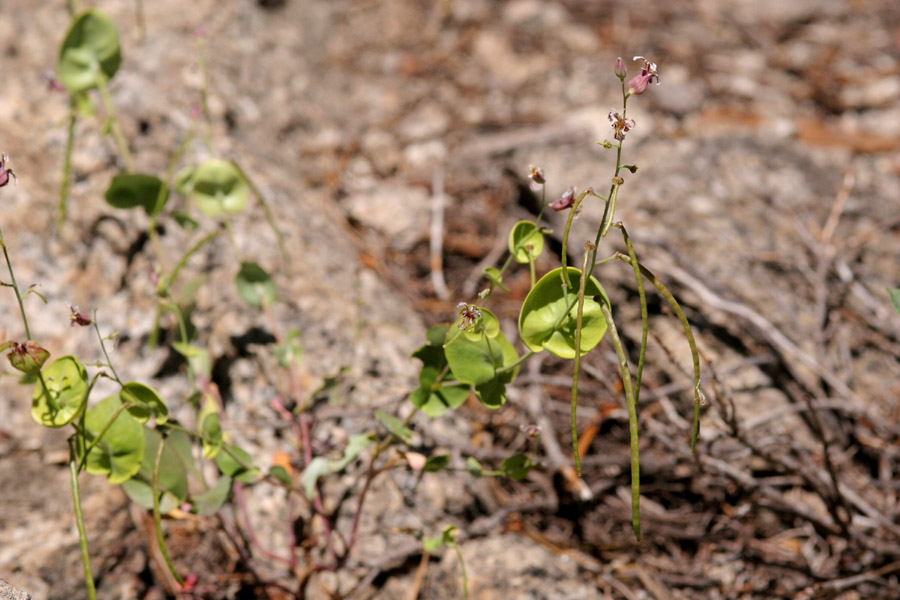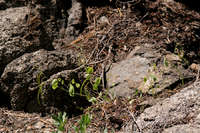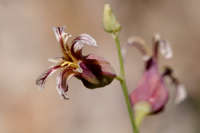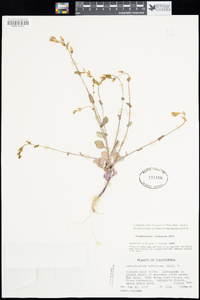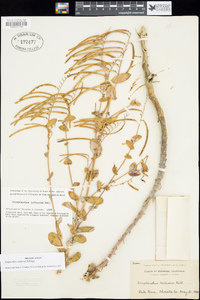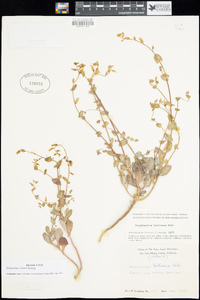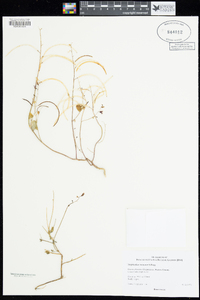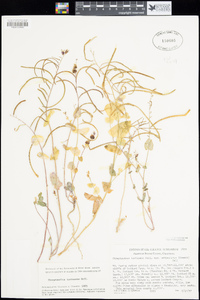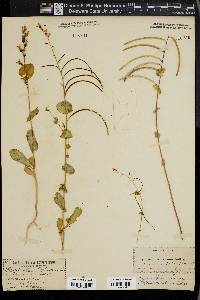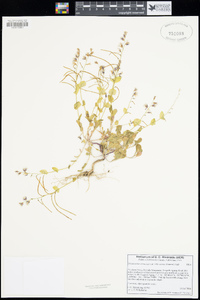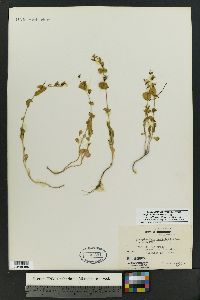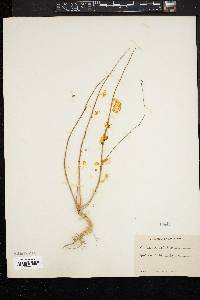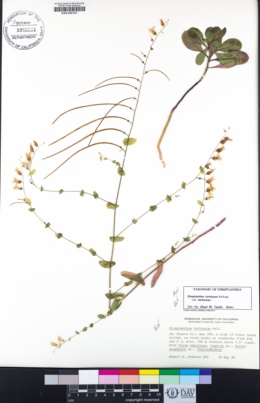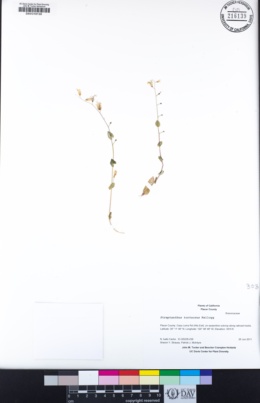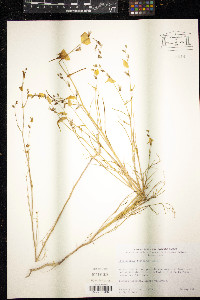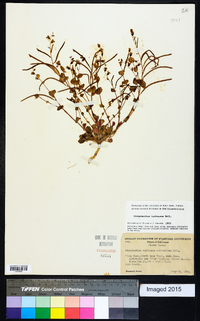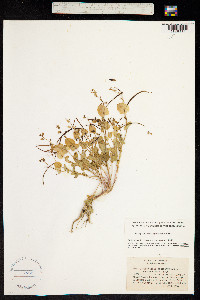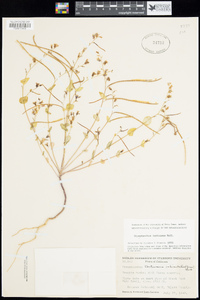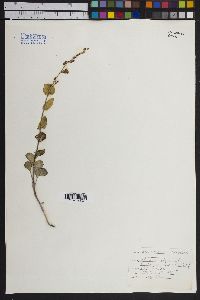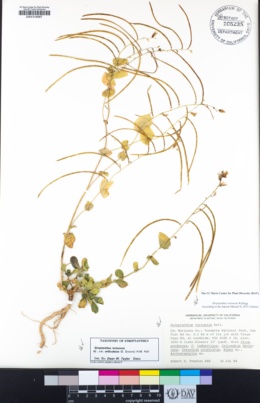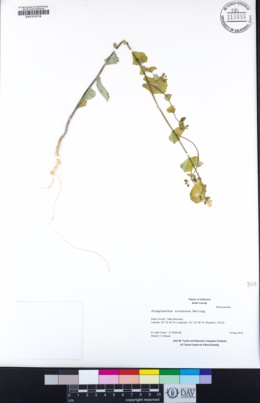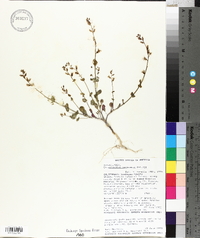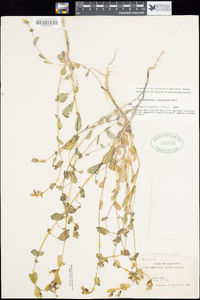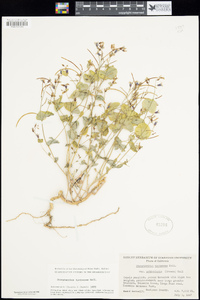
|
|
|
|
Family: Brassicaceae
Shieldplant
|
Biennials or perennials; (short-lived); (glaucous), glabrous throughout. Stems unbranched or branched (several) basally and distally, (0.5-)1.5-12(-15) dm. Basal leaves (soon withered); subrosulate; petiolate; blade broadly ovate, obovate or oblong, 1.5-6 cm, margins entire or repand, or dentate apically. Cauline leaves: blade oblong to obovate or suborbicular, or (distally) orbicular or oblong-ovate, (0.7-)1.5-6(-9) cm × (4-)10-45 mm, base auriculate to amplexicaul (amplexicaul distally), margins entire or repand. Racemes bracteate below or between proximalmost 1 or 2 flowers, (lax to compact, secund or not). Fruiting pedicels divaricate to ascending, (2-)3-12(-17) mm, (expanded at receptacle). Flowers: calyx urceolate; sepals purplish, gray-green, or yellowish, 6-10(-13) mm, keeled or not, (apex recurved); petals purplish or yellowish white (usually with purple veins), (6-)8-14 mm, blade 2-5 × 1-2.5 mm, margins not crisped, claw 4-10 mm, as wide as or wider than blade, (apex reflexed); stamens in 3 unequal pairs; filaments (distinct): abaxial pair (2.5-)4-7 mm, lateral pair (1.5-)3-5 mm, adaxial pair (5-)7-11 mm; anthers (all) fertile or adaxial pair with reduced fertility and shorter, (1.5-)2.5-4.5(-6) mm; gynophore 0.2-1 mm. Fruits arcuate-spreading to pendent, torulose or smooth, straight, flattened, (3-)4-13 (-16) cm × 1.5-2.5(-3) mm; valves each with obscure or somewhat prominent midvein; replum straight; ovules 26-76(-110) per ovary; style 0.4-0.7 mm; stigma entire. Seeds broadly oblong to ovoid or orbicular, 1.5-2.5 × 0.8-1.7 mm; wing 0.1-0.5 mm wide, continuous or on distal 1/2. 2n = 28. Flowering Apr-Sep. Rocky open slopes, open woodlands, montane forests, alpine areas; 200-4100 m; Calif., Nev., Oreg. Streptanthus tortuosus is highly polymorphic, forming distinct local races. Variation in duration, stature, branching, development of the sepal keel, petal color, and bract size are not correlated with habitat or geography. Some authors (e.g., R. C. Rollins 1993; R. E. Buck et al. 1993) divided it into five varieties based on variations in those characters, but the variation is continuous and the purported differences do not hold. For example, those authors and N. H. Holmgren (2005b), recognized the highly branched, shorter plants of the alpine Sierra Nevada as var. orbiculatus, but intergradation downslope is completely clinal. The most distinctive variant (S. foliosus) is restricted to the central Sierra Nevada, where plants with large, brittle, subachlorophyllus bracts predominate. However, that condition reappears sporadically in the Klamath Ranges and elsewhere. Annual plants have never been documented in S. tortuosus, contrary to the claim by some authors (e.g., Rollins; Buck et al.; Holmgren); the alleged 'annuals' produce rosettes that invariably overwinter before flowering. Without thorough molecular, experimental, and cytological study of this complex, it is impractical to recognize ill-defined varieties that represent only a minor fraction of the overall variation in the species. R. C. Rollins (1993) placed Streptanthus foliosus in the synonymy of S. diversifolius, but its type clearly belongs to S. tortuosus.
|
This project was made possible in part by the Institute of Museum and Library Services [MG-70-19-0057-19].
Powered by Symbiota

